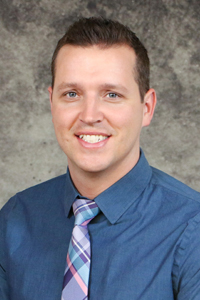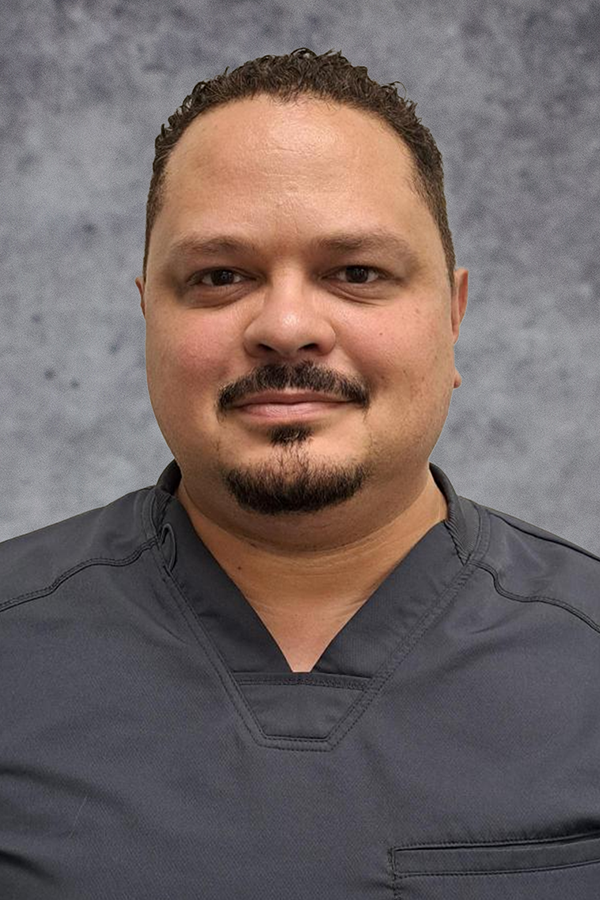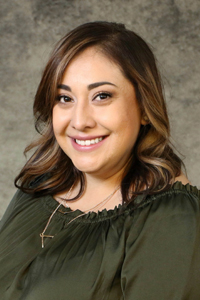Standardized Patient Program
Home / Academic Program / Pre-Clinical Education (Year 1 & Year 2) / Standardized Patient Program
Become a Standardized Patient at Burrell College of Osteopathic Medicine and earn $15.00 an hour.
What is a Standardized Patient?
A Standardized Patient (SP) is an individual trained to portray a specific patient case in a consistent manner. Our SP’s are generally healthy people who have been trained to portray a real patient’s case in a testing situation. The SP is trained to present a patient history and (sometimes) physical symptoms. The word “standardized” means that the standardized patient repeats his or her story in a consistent manner to numerous students. During an interaction with a student, the SP presents the case history in response to questioning by the student and/or undergoes physical examination at the student’s direction. At the end of the encounter the SP provides constructive verbal or written feedback to the student.
Our SPs come from all walks of life and are 18 years of age and above. Many have backgrounds in education, social work or some medical profession, but all must possess excellent communication skills. A flexible schedule, transportation, and punctuality are essential.
What happens in a typical SP exercise?
Students rotate from station to station, alone or in groups or pairs. A faculty member is sometimes also in the room, observing the students and using a checklist for grading. The student begins the exercise by interviewing and/or examining the SP for 10-15 minutes, depending on the exam. Afterwards the SP “breaks role” and provides the student with verbal or written feedback based on their performance. We do run many types of clinical assessment exams, and not all follow this pattern. Often faculty will be in the room observing and grading the students.
How is this different from acting?
This work has nothing to do with finding dramatic moments or playing to an audience. It has everything to do with disciplining yourself within the needs of the case and exam. It may be appropriate for you to appear anxious, irritable, or confused during an interview if that is part of the training scenario. The ability to improvise is very helpful.
People who are interested in students and learning, who are excellent listeners and who can focus on the educational goals of the session, make good standardized patients. It isn’t necessary to have a medical background or vocabulary. In fact, the Standardized Patient Program strives to involve as many diverse people as possible.
How do I know what to say when the medical student interviews me?
You will be trained by reviewing a “patient case” or script detailing the current medical problem, past medical history, family and social situation, and emotional state you will need to portray. You will learn to appear as the patient by using specific body language, movement, and responses to physical examination. For cases requiring a physical exam you will know how to move as the patient would and also simulate findings while being examined. We will occasionally have you come into our center for formal training sessions with other SP’s. When working as an SP it is important that you portray the case exactly the same way for every student who interviews you.
Will I undergo a physical exam or have to remove my clothing?
For patient cases that require no physical examination, SPs wear street clothes. If the students are expected to perform a physical examination, you may be required to wear a hospital gown (with undergarments on underneath the gown). The cases that require these physical examinations are outlined for SPs prior to their agreement to participate in them.
What is expected of me as a Standardized Patient?
- Have strong verbal communication skills
- Be comfortable with their health and dealing with health professionals
- Be willing to be videotaped for educational purposes
- Be comfortable giving both positive and constructive feedback after being interviewed or examined
- Not have any biases against anyone based on their gender, race, religion, national origin, physical characteristics, etc.
- Be reliable and punctual to scheduled events and flexible with their schedule
- Keep all cases information confidential
- Repeatedly portray a patient case with accuracy as trained by Burrell College of Osteopathic Medicine faculty or staff
- Have the desire to contribute to the training process of excellent physicians
How often do I work?
The work is contracted as temporary and/or seasonal. SP sessions are scheduled according to student needs and program requirements. Some SPs will only work 2 or 3 days a year and others may work ten days in a month. SPs who arrive on time and perform satisfactorily are given preference for future work, depending on the need and case requirements
Thank you for your interest! Please call us directly at (575) 674-2380 if you have any questions.
Thank you,
Burrell College of Osteopathic Medicine Standardized Patient Program
Burrell College Osteopathic Medicine
New Mexico Campus:
3501 Arrowhead Dr. #131
Las Cruces, NM 88001
Phone: (575) 674-2380 | Fax: (575) 674-2389
Florida Campus:
3011 S. Babcock St.
Melbourne, FL 32901
Phone: (575) 674-2380 | Fax: (575) 674-2389

Ben Matkin
Director of Standardized Patient Program
BSBA, New Mexico State University

Alfred Toledo, MA
Assistant Director of Standardized Patient Program & Sim
BA, Universidad Biblica Internacional
MA, Universidad Nuestro Pacto Internacional

Karen M. Provencio, BA
Standardized Patient & Simulation Specialist
AS, Dona Ana Community College
BA, New Mexico State University


